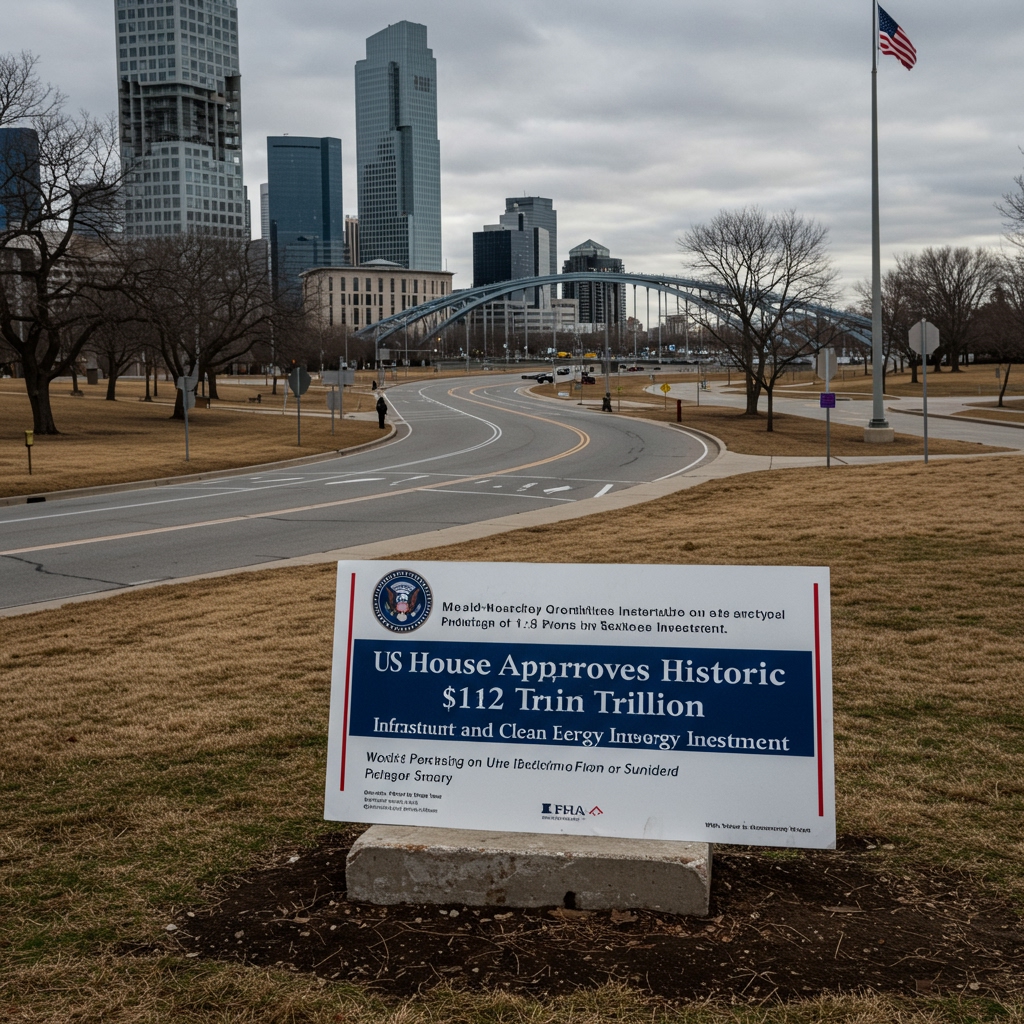US House Passes Landmark $1.2 Trillion Infrastructure and Clean Energy Act
Washington, D.C. – In a consequential legislative move, the U.S. House of Representatives today successfully passed the Infrastructure and Clean Energy Act, designated as H.R. 345. The sprawling, multi-faceted package, totaling an ambitious $1.2 trillion, cleared the chamber in a narrow 218-211 vote, underscoring the deep political divisions surrounding its scope and funding. This landmark bill represents a cornerstone legislative priority for the current administration, aiming to inject significant federal investment into critical infrastructure needs and advance clean energy initiatives across the nation.
The passage of H.R. 345 follows months of intense negotiation and debate, culminating in a vote that largely fell along party lines, though specifics of the final tally reveal some bipartisan crossover. The legislation is designed to authorize and allocate substantial funding over the next five years across a wide spectrum of national priorities. Key components of the massive investment include dedicated funding for repairing roads and bridges – addressing long-standing concerns about the aging state of the nation’s transportation networks. Beyond traditional ‘hard’ infrastructure, the bill makes significant strides in modernizing connectivity, specifically targeting the expansion of broadband internet access to underserved urban, suburban, and rural communities, aiming to bridge the digital divide.
A crucial focus of the Infrastructure and Clean Energy Act is the future of the nation’s energy systems. The package allocates substantial resources towards upgrading the nation’s electric grid, enhancing its reliability, resilience, and capacity to integrate renewable energy sources. This infrastructure modernization is seen as vital for preventing outages, preparing for the impacts of climate change, and facilitating the transition to a cleaner energy economy. Complementing this, the bill includes significant investing in clean energy projects, encompassing initiatives ranging from renewable energy deployment and energy efficiency improvements to the development of clean transportation alternatives and carbon capture technologies. These investments are intended to spur innovation, create jobs, and contribute to the administration’s climate goals.
The path to passage in the House was marked by heated debate. Lawmakers engaged in extensive discussions on the floor and behind closed doors, highlighting deep divisions over funding mechanisms for the ambitious package and the specific project priorities included within its vast scope. Critics raised concerns about the national debt implications, the structure of federal funding distribution to states and localities, and the balance between traditional infrastructure spending and new investments in areas like broadband and clean energy. Proponents argued that the investment is essential for national competitiveness, economic growth, job creation, and addressing pressing societal challenges like climate change and digital inequality. The narrow margin of victory reflects the intensity of these disagreements.
The $1.2 trillion allocated under H.R. 345 is structured to flow through various federal agencies and existing programs, as well as establish new initiatives. The sheer scale of the funding package positions it as one of the most significant federal investments in infrastructure in decades. Proponents argue that delayed maintenance and insufficient investment have cost the U.S. economy significantly over time, citing the need for proactive measures to ensure future prosperity and safety. The funding is expected to support millions of jobs directly and indirectly across various sectors, from construction and engineering to manufacturing and technology.
The successful House vote sends the Infrastructure and Clean Energy Act to the Senate for consideration. While the House passage is a major step, the bill’s journey through the Senate is anticipated to bring renewed scrutiny and potential amendments. The legislative calendar and competing priorities in the Senate chamber will determine the timeline for its debate and potential final passage. Given the bill’s status as a key legislative priority for the current administration, significant political capital is expected to be deployed to shepherd it through the upper chamber. The outcome in the Senate remains uncertain, but the House’s action today marks a pivotal moment in the legislative push for comprehensive infrastructure and clean energy reform.
Observers note that the bill’s emphasis on both traditional physical infrastructure and forward-looking investments in clean energy and digital connectivity reflects a broader strategy to prepare the nation for the challenges and opportunities of the 21st century. The debate, though contentious, highlights the complexity of national policymaking on issues with such far-reaching economic, social, and environmental implications. The vote today represents a significant milestone, setting the stage for the Senate’s critical review of this potentially transformative piece of legislation.
In summary, the House’s passage of the Infrastructure and Clean Energy Act, H.R. 345, with its $1.2 trillion allocation for repairing roads and bridges, expanding broadband internet access, upgrading the nation’s electric grid, and investing in clean energy projects over the next five years, underscores a major federal commitment to modernizing the nation. The narrow 218-211 vote and heated debate reveal the political hurdles overcome and those still ahead as the bill now advances to the Senate for consideration.





